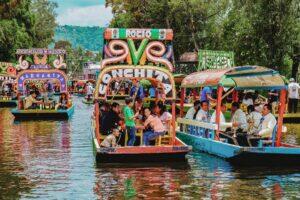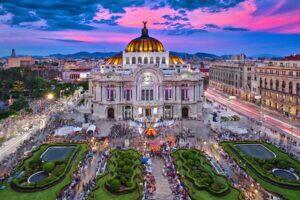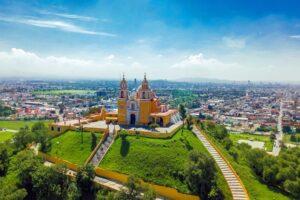Fodor's Expert Review La Villa de Guadalupe
La Villa—the local moniker of the site of the two basilicas of the Virgin of Guadalupe, about 7 km (4 miles) north of the Zócalo—is Mexico's holiest shrine. Its importance derives from the miracle that the devout believe occurred here on December 12, 1531: an Aztec named Juan Diego received from the Virgin a cloak permanently imprinted with her image so he could prove to the priests that he had experienced a holy vision. Although the story of the miracle and the cloak itself have been challenged for centuries, they are hotly defended by clergy and laity alike. Every December 12, millions of pilgrims arrive, many crawling on their knees for the last few hundred yards, praying for divine favors.
Outside the Antigua Basílica (Old Basilica) stands a statue of Juan Diego, who became the first indigenous saint in the Americas when he was canonized in 2002. The canonization of Juan Diego was wildly popular among Mexican Catholics, although a vocal minority... READ MORE
La Villa—the local moniker of the site of the two basilicas of the Virgin of Guadalupe, about 7 km (4 miles) north of the Zócalo—is Mexico's holiest shrine. Its importance derives from the miracle that the devout believe occurred here on December 12, 1531: an Aztec named Juan Diego received from the Virgin a cloak permanently imprinted with her image so he could prove to the priests that he had experienced a holy vision. Although the story of the miracle and the cloak itself have been challenged for centuries, they are hotly defended by clergy and laity alike. Every December 12, millions of pilgrims arrive, many crawling on their knees for the last few hundred yards, praying for divine favors.
Outside the Antigua Basílica (Old Basilica) stands a statue of Juan Diego, who became the first indigenous saint in the Americas when he was canonized in 2002. The canonization of Juan Diego was wildly popular among Mexican Catholics, although a vocal minority of critics (both in and out of the Church) argued that, despite the Church's extensive investigation, the validity of Juan Diego's existence is suspect. Many critics see the canonization of this polarizing figure as a strategic move by the Church to retain its position among Mexico's indigenous population. The old basilica dates from 1536; various additions have been made since then. The altar was executed by sculptor Manuel Tolsá. The basilica now houses a museum of ex-votos (hand-painted depictions of miracles, dedicated to Mary or a saint in gratitude) and popular religious, decorative, and applied arts from the 15th through 18th centuries.
Because the structure of the Antigua Basílica had weakened over the years and the building was no longer large enough or safe enough to accommodate all the worshippers, Pedro Ramírez Vázquez, the architect responsible for Mexico City's splendid Museo Nacional de Antropología, was commissioned to design a shrine, which was consecrated in 1976. In this case, alas, the architect's inspiration failed him: the Nueva Basílica (New Basilica) is a gigantic, circular mass of wood, steel, and polyethylene that feels like a stadium rather than a church. The famous image of the Virgin is encased high up in its altar at the back and can be viewed from a moving sidewalk that passes below. The holiday itself is a great time to visit if you don't mind crowds; it's celebrated with various kinds of music and dancers.
It's possible to take the metro here—La Villa-Basílica station is just a couple of blocks south. But it's not the safest or most scenic part of town, and it's quicker and more secure to go by Uber.
READ LESS








